Grass lawn design is a little un-PC in the landscape design world. In a time where we all need to pay a lot more attention to the decisions we make regarding our land and how we treat it, it is fair to question the rampant overuse of turf grass. But – lets not throw the baby out with the bathwater. There are interesting and more thoughtful and responsible ways to use a lawn in garden design.
Here are some great fun ways to play with growing grass and lawns to make something much more interesting than just a big flat green space.
Lawns and grass are the best design solutions in some places. The problem is insane overuse, ubiquity, and subsequent resource intensiveness that is getting us.
If you love grass, here are some different ways to think about using it in your landscape.
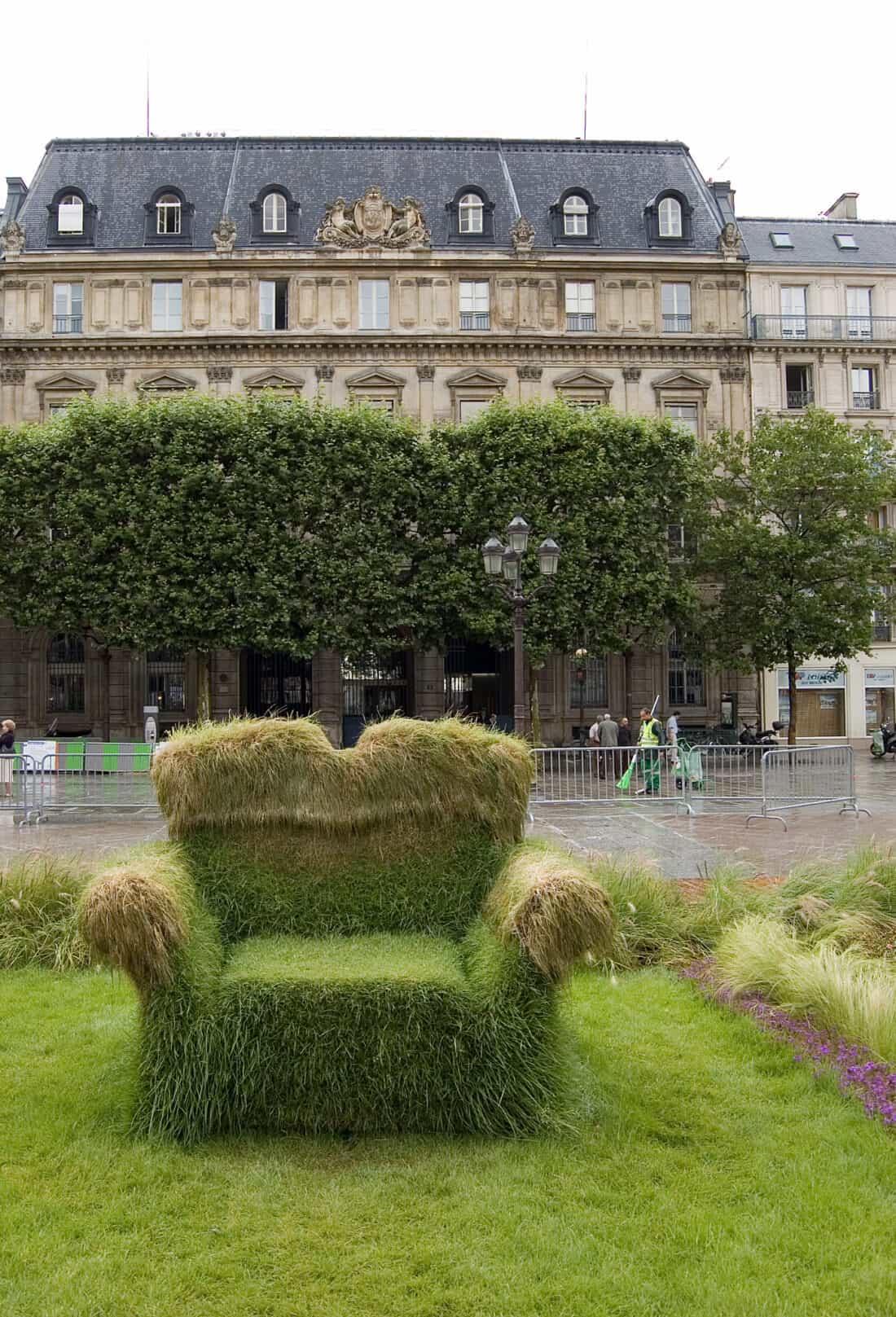
Grow Grass over a Form
Grass can grow in a lot of strange places. Growing turf grass over forms or shapes to create garden features offers an innovative approach to blending art and nature. Imagine a living, green sculpture, like a comfortable grass-covered chair, inviting relaxation and interaction in your garden.
The possibilities are endless: envision a turf grass sofa for a whimsical seating area, or perhaps sculptural animals for a playful touch in a family garden. These verdant creations are more than just eye-catching—they’re a conversation starter, a fusion of practical landscaping and imaginative artistry.
To achieve these living sculptures, you can use wireframes or specially designed forms as a base, over which turf grass is carefully grown and maintained. This technique requires precision and patience, but the result is a unique, organic feature that brings a touch of whimsy and innovation to any outdoor space.
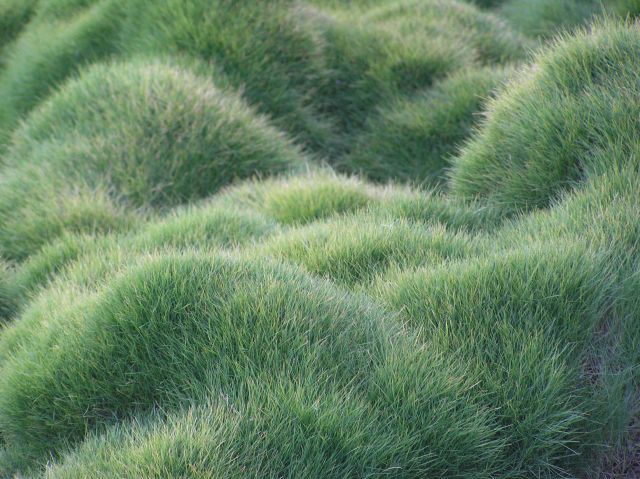
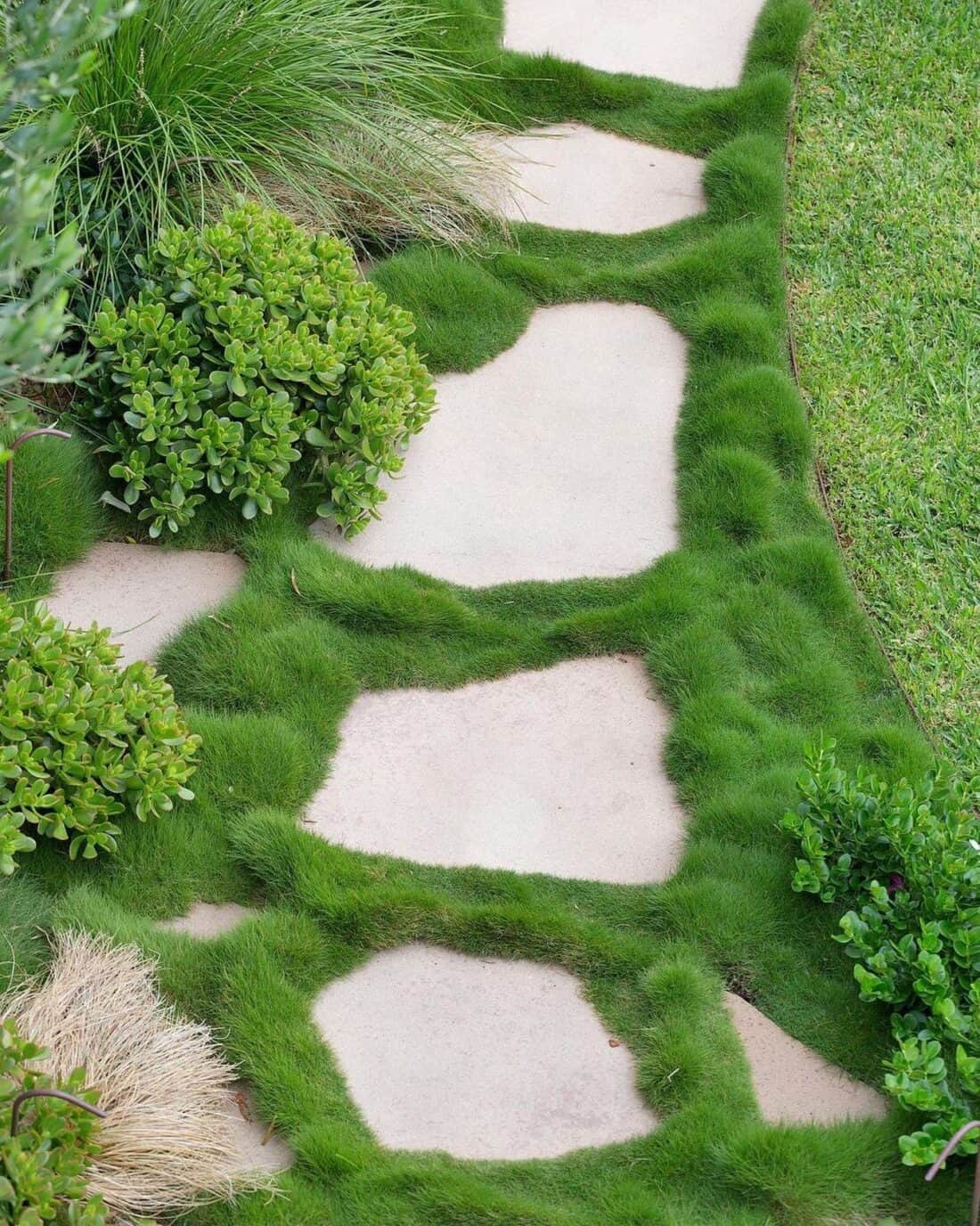
Encourage the Textural Beauty of the Lumpy Lawn Grass
Zoysia (a very common turfgrass)- left unmown will eventually grow into bubbles and tufts. These lumpy features are quite beautiful and a unique design element. These mounded tufts are often compared with the look of moss. Between stones and along the edges of paths, the mounds make pleasingly soft pillow-like edges. I am not sure what it would take to successfully create a grass feature like this one, but now I think I might need to figure it out…
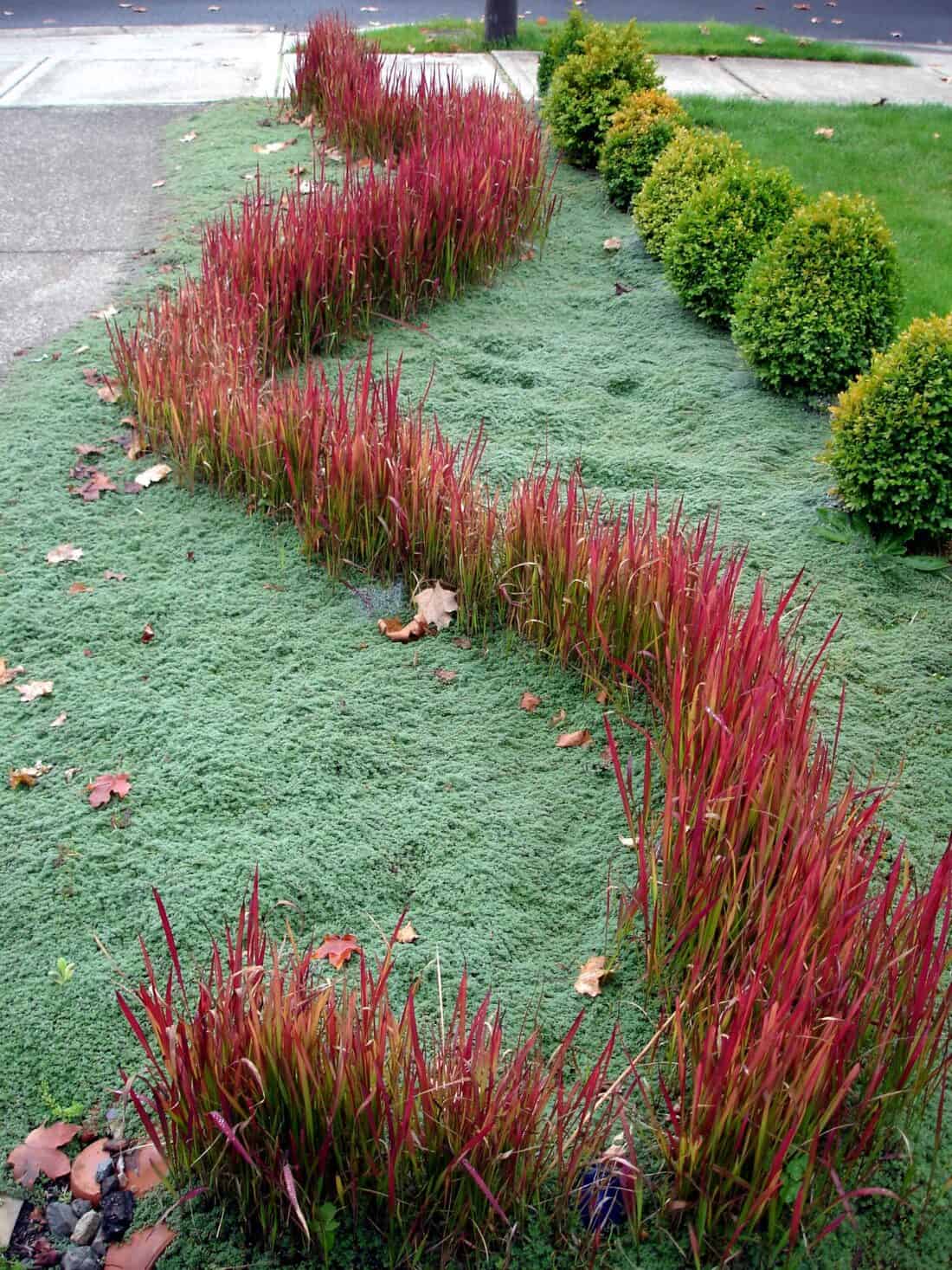
Choose Highly Ornamental and Colorful Grasses
This mix of creeping thyme and Imperata Rubra (Japanese blood grass) is really striking. While I would be concerned about the inevitability of the grass escaping the confines of the design, I think that this is a great water wise idea for the no-mans land between the sidewalk and the road. There are many native and ornamental grasses that have unique features that, when planted enmasse, become a strong textural, colorful or high contrast design element.
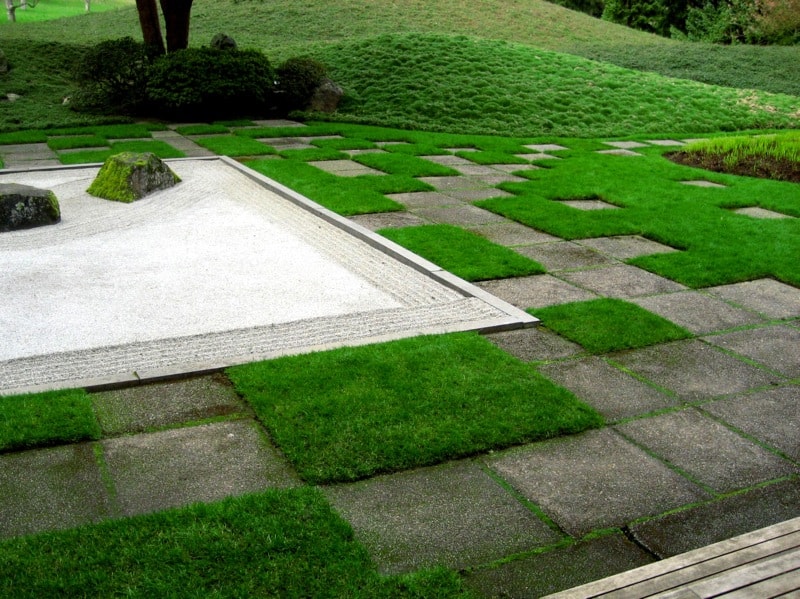
Give the Grass Lawn Design a Distinct Shape
Geometry and strong boundaries make grass a thoughtless wall-to-wall installation and elevate the beauty of the carpet-like feature we love. By mixing it with square pavers (to make contrasting square grass patches to offset as you see above) or by outlining it with distinctive metal edging and bright paths – the geometry and textural contrast are highlighted.
>>Check out this post where grass is given shape with circles.
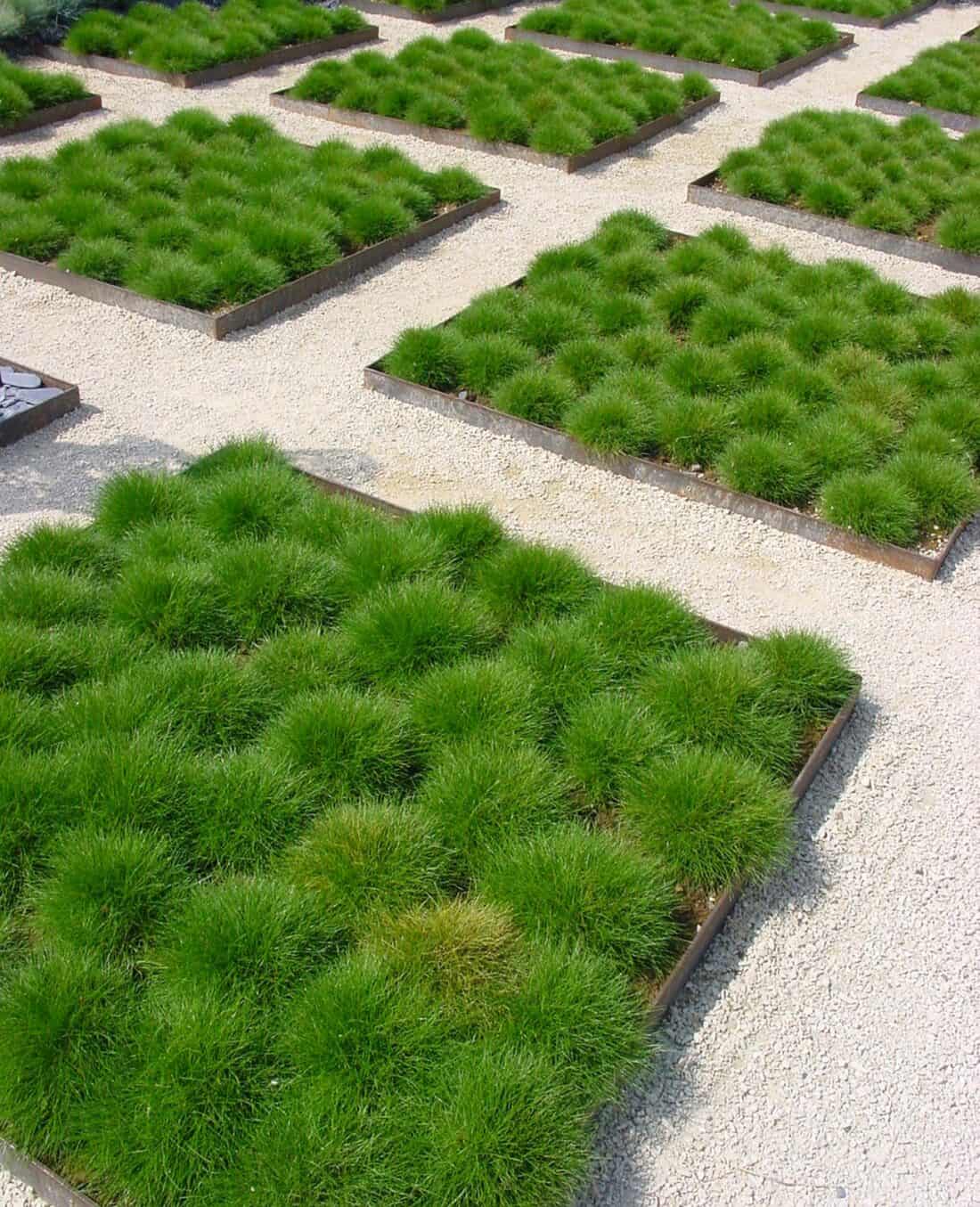
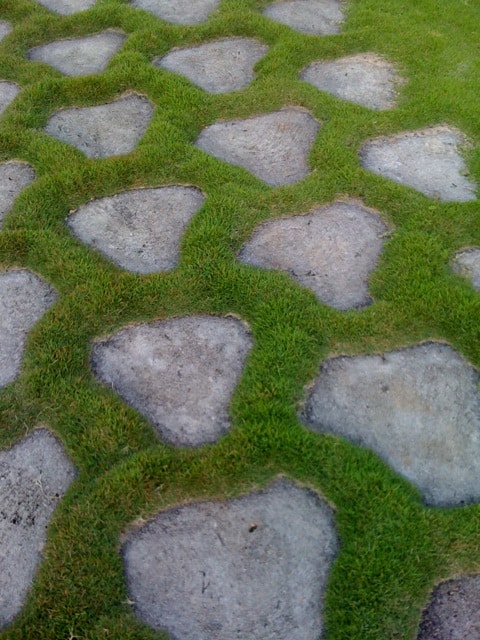
Combine Grass with Concrete, Stone or other Pavers to create Hard-wearing but Permeable Surfaces
To me, cars are an annoying necessity of most American lives. All the accessories that go along with them (like car parks, driveways and mechanics) are things I would rather not have to live with. So, disguising access to your garage with an interesting and green design is certainly appealing.
Also, permeable paving (where water can be absorbed either through the paving or through the joints in the paving) is vastly more desirable – particularly in densely populated and urban environments to help manage stormwater. The more water that can csoak into the surface e of the earth, where it falls, the better. Also, all the adjacent trees and landscaping will be appreciative that you didn’t pave over their root zones.
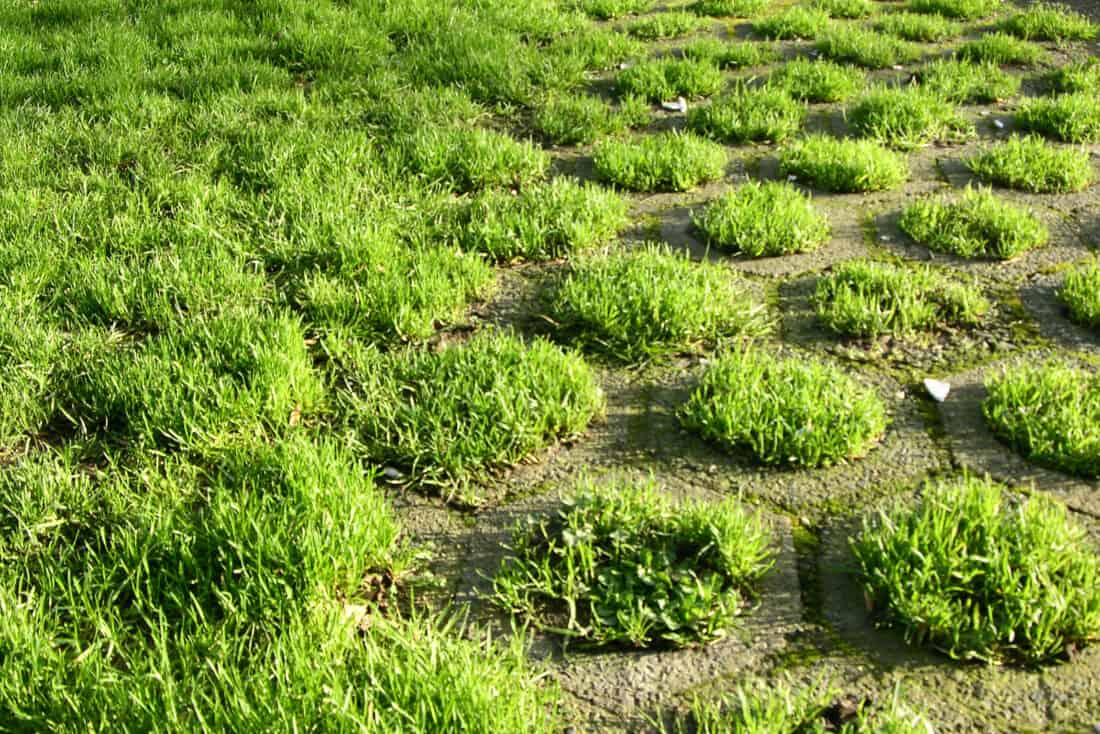

Elevate the Grass by treating it like a more precious plant.
I include this image above because, while it is not actually grass, it certainly seems inspired by it. It is a path through the iris garden at the Kyoto Botanical Gardens – the plants have a grassy look, and it inspired me to think that a beautiful garden feature could be made through any type of ornamental grass area by similarly creating an elevated walkway.
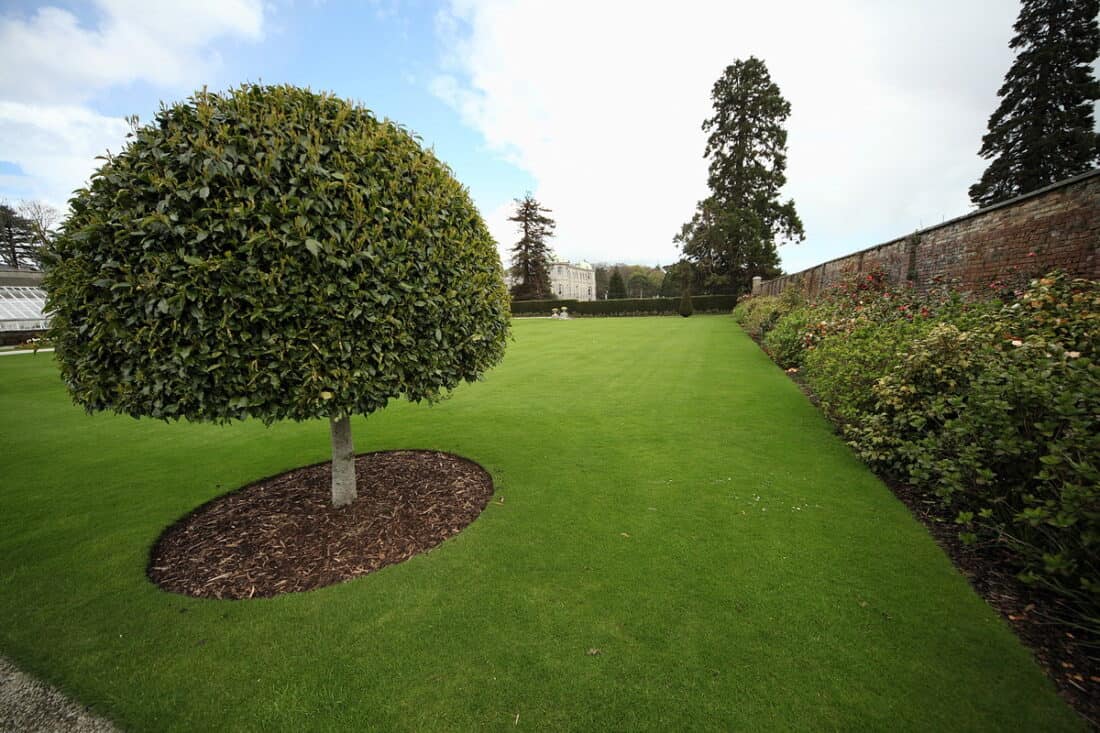
If you are going to do a lawn – do it in a manageable way and do it to perfection (or don’t do it at all)
To me, a perfect lawn is a complete triumph over nature that in order to achieve, requires an effort and constant struggle that I would rather not involve myself with. And at scale – it is one of the most ecologically and environmentally damaging things we can do as homeowners.
The lawn at Powerscourt Gardens was created 300 years ago. Considering the horticultural effort required to achieve this is similar to that of an ancient bonsai tree, I can certainly justify its maintenance and historical preservation (for horticultural historical reasons).
To me, it is like looking at art or architecture from another era. It is worth studying, admiring, and preserving, but we are allowed to progress with new styles and building materials that better match the world we live in. We don’t still use lead paint, railroad ties filled with carcinogenic chemicals, or asbestos siding.
I guess if you are as obsessed with this type of lawn (as many people are – it seems to go along with the notion of having achieved American success – I.e., the house with the lawn…) – I would encourage you to question your motivations and if you really need to play this game. Keeping up with the Joneses is a terrible way to live your life (in general), and to slave yourself to a lawn for the sake of making a good impression is silly (and expensive and harmful). And it is starting to make you look more than a little old-fashioned.
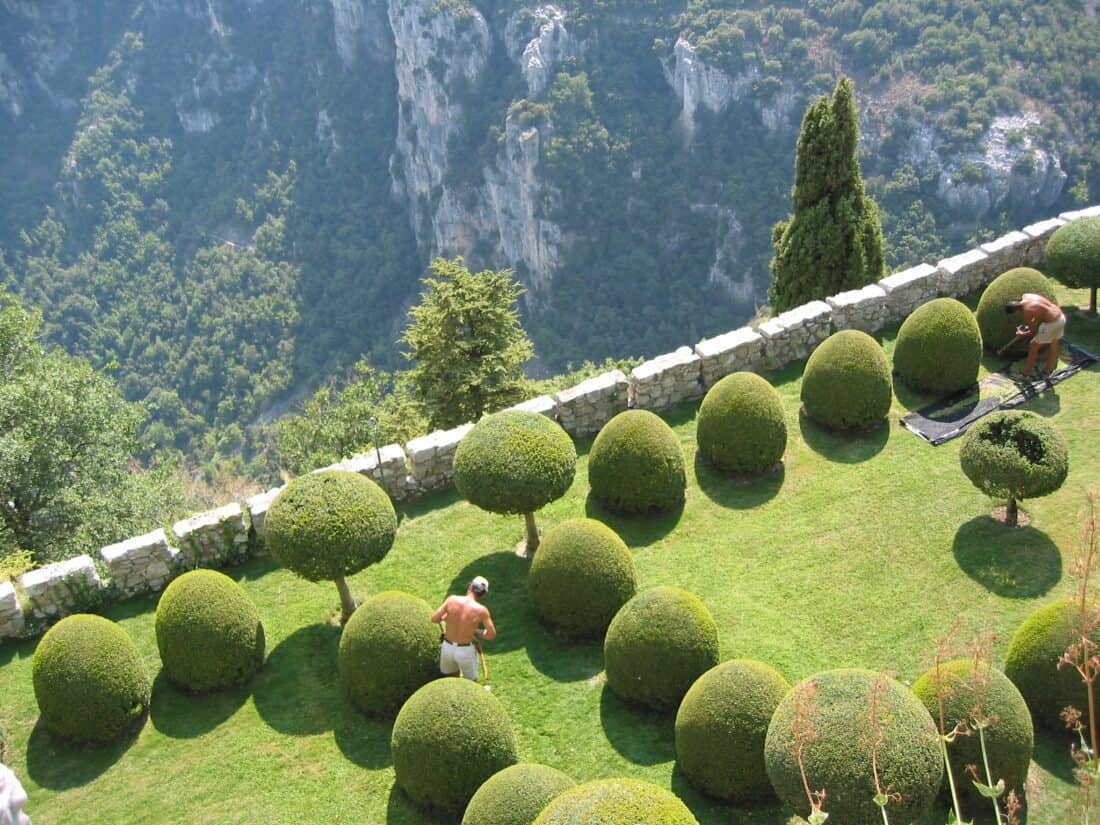
Use Turf grass as a medium-traffic footpath.
Turf grass is superbly suited for paths and walkways, providing a durable and visually appealing walkable ground cover surface in gardens and outdoor spaces.
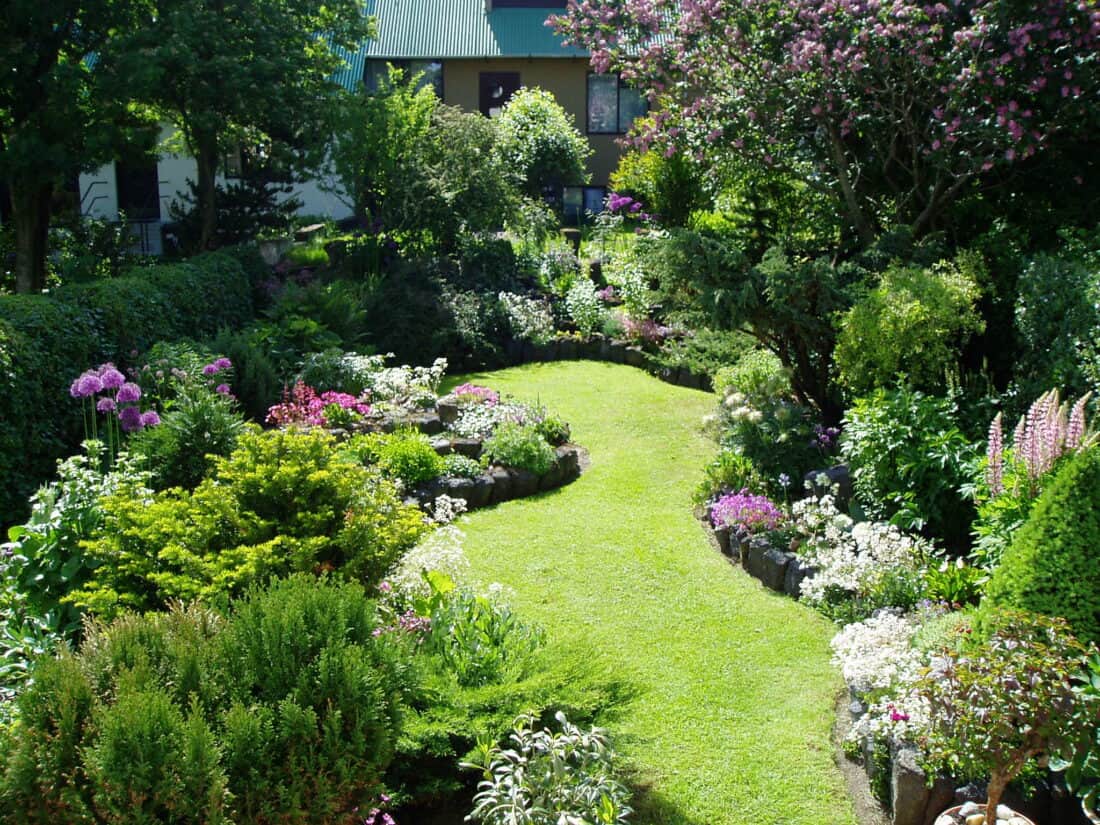
Use it strategically to keep weeds down and provide a defined surface for walking. Weave it among plants and use it to guide visitors to destinations in your garden. Its resilience under frequent foot traffic makes it an ideal choice for creating practical yet attractive green pathways.
However, using turf grass as a wall-to-wall carpeting option in large areas can pose challenges. Its requirements for consistent sunlight, adequate drainage, and regular maintenance, including mowing and watering, make it less practical for expansive coverage. (Stop thinking of it as wall-to-wall carpeting and instead like a throw rug or a runner down a hallway. For this, it is a great alternative to a gravel or otherwise paved path.)
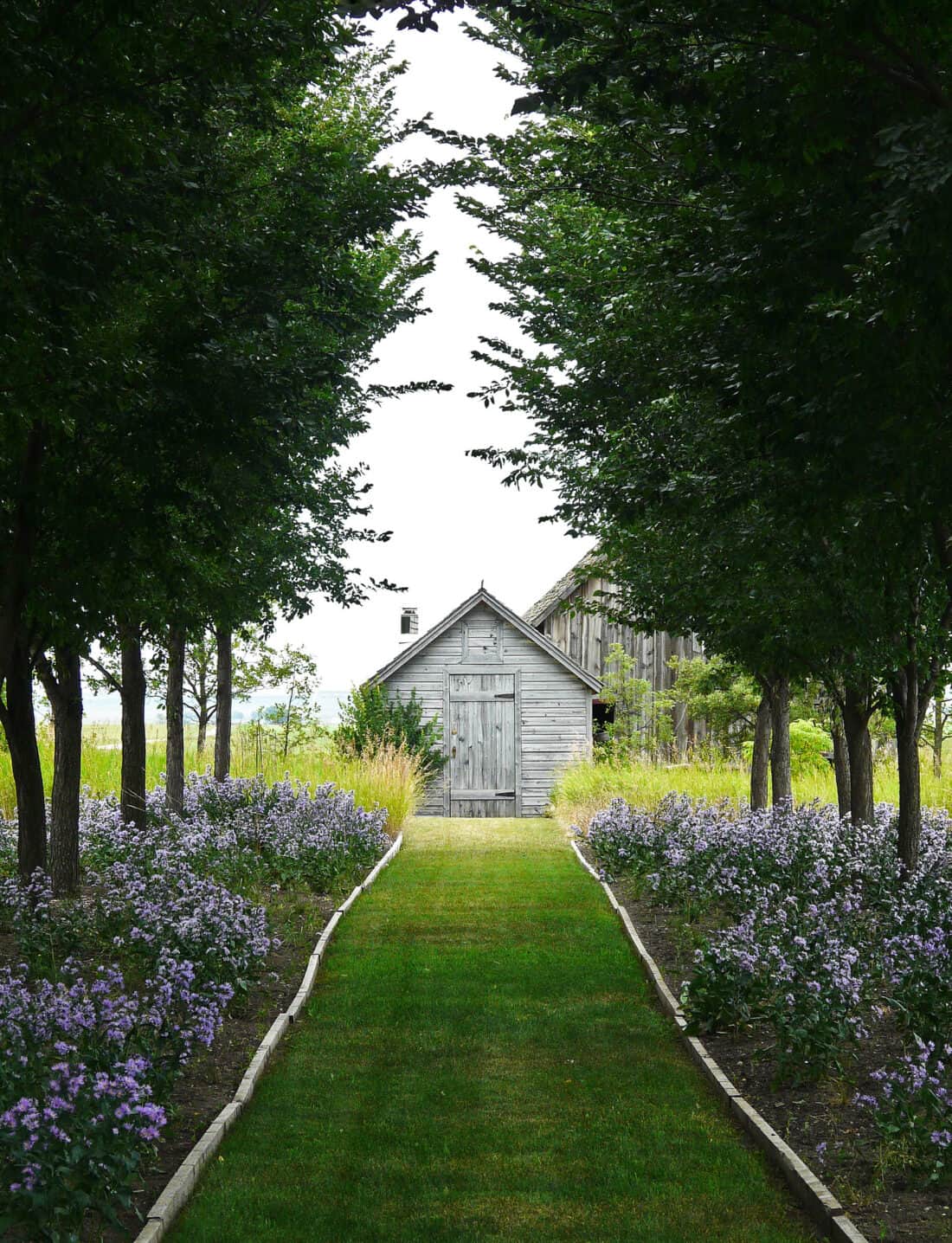
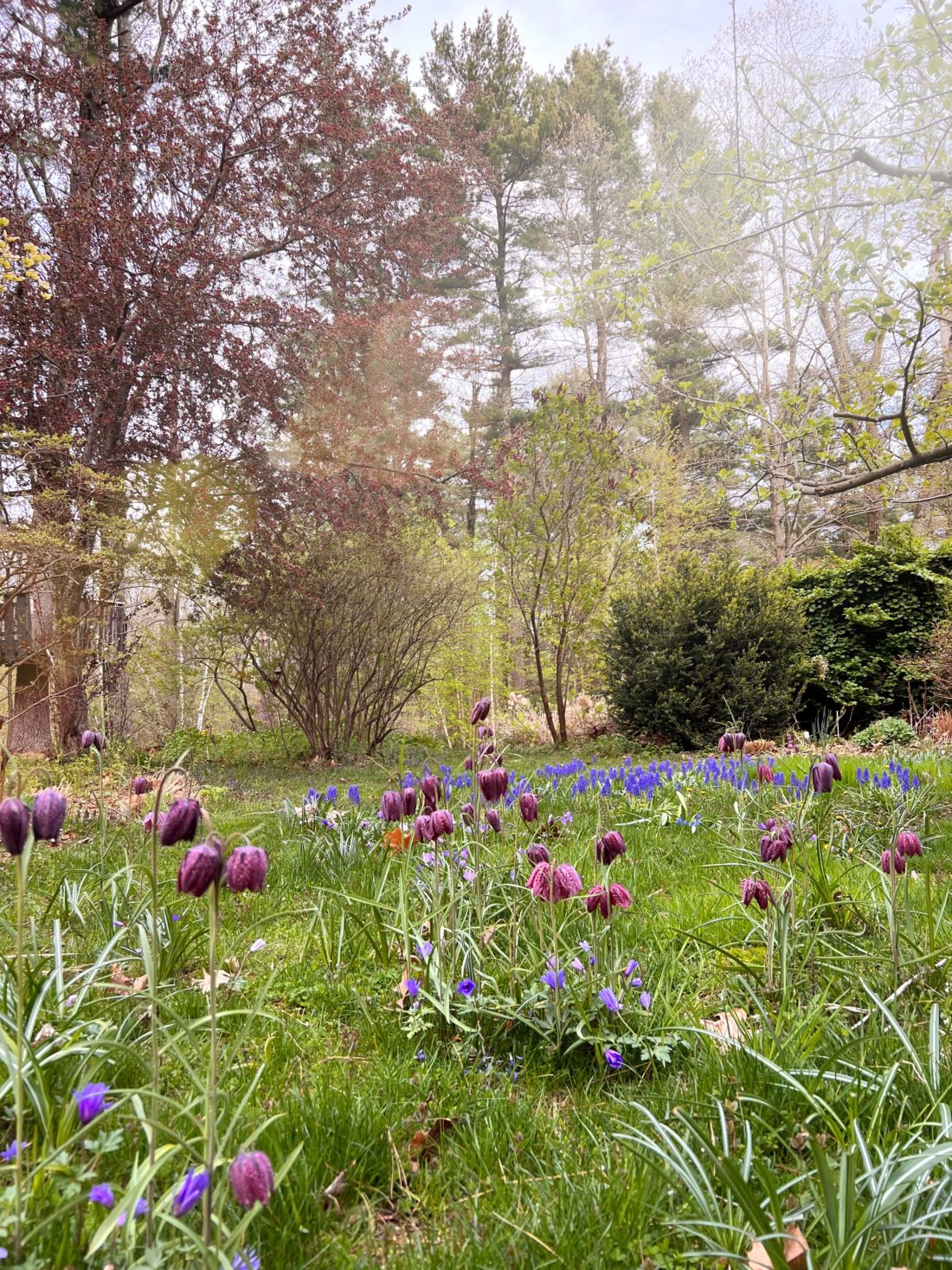
Avoid Grass Monocultures- Encourage Weeds and purposely add diversity to your lawn design
A more perfect lawn is comprised of grass that looks as beautiful when NOT mowed as it does sheared. It can create a beautiful flowy grass meadow that is full of pollinators if left to grow long. Most turf grasses will look great at a longer length. If you are worried that it will look messy or unkempt, consider mowing a path through it or outlining the edges with a mown strip. By giving attention to these details, you convey what is commonly referred to as a “cue to care”. The mown areas will formalize the unmown areas, making them feel fresh and purposeful.
A lawn left to grow long will encourage other plants to thrive, and a more natural and healthy version will emerge.
Use turf grass and lawns wisely, Actually design with them – and Don’t overuse
Provided you don’t have to water it like crazy, you can live with chemical-free imperfections, and you don’t treat it like wall-to-wall carpeting at the loss of something better – I think that turf grass has a continued place in garden design.
Rochelle,
Very thoughtful and timely piece. Lawns have become synonymous with chemicals and water waste. I agree with you that lawns will always and should always have a place in the garden, provided we free our minds of what a lawn is. When thought of as a large boring monoculture, ripe for the next disease or pest to invade, and needing synthetic fetilizers and chemicals to survive, I vote no. But when thought of as a diverse ecological community comprised of many grass species and flowering plants such as violet, clover and ajuga, growing in a healthy organic soil, I say that now we have a beautiful addition to any garden. One that can be safely enjoyed by nature and humans alike.
Thanks for writing about a topic that seems to have become Taboo in our community.
Scott
I might have enjoyed my semester in turf at college, had it included anything even remotley like what you showed in your post!
Thank you for a beautifully rendered and articulated post.
So much more thought provoking than the hysterical anti-lawn nut jobs who are often found posting on The Garden Rant.
I find that there is a mounting hysteria in garden and landscape design that is evidenced by Michelle’s comment. Grass/turf/lawn is not the enemy–it, like anything else in the designed environment should have thoughtful use no more no less. I have said here and elsewhere that as long as there are bare feet, a need for play space or a just place to lie down and look up at the sky and stars then we will have a place for lawn.
I see the “choir is here” and I’m with you. Lawns are not the enemy, people’s irresponsible behavior is! Love the design ideas Rochelle.
Shirley Bovshow “EdenMaker”
Very nice piece of work. I’m with Scott & a couple others here. Lawns & grasses definitely have a place in our yards, gardens & parks. Thoughtful planning and proper management are the difference between a balanced, environmentally beneficial area and one that sucks resources and pollutes with relative abandon. Love that shot from the Castle of Gourdon by the way. Thanks for the great post.
Hi Rochelle – v. interesting post and great collection of shots. With kids, I could not be without the lawn, but I have tried to add some interest by mass planting crocus bulbs and then allowing the circle shapes of longer grass to stay there for a few weeks after the flowers have finished. http://littlegreenfingers.typepad.com/little_green_fingers/2009/03/belated-fairy-rings-or-what-to-do-with-1800-crocus-bulbs.html
I do feel lawns give huge opportunites for interesting designs – and when they are such good value to create, I couldn’t imagine designing without them.
I would love to create some grass covered furniture but the topography of it just creates a nightmare for maintenance. I am quite interested in the lawn mixes they now create with micro-clover, allowing lawns to be have the essence of green in a drought without needing to water them.
Beautiful
These are my kind of gardens! Love the amazing details.
P.S. thanks for posting my photos on your amazing blog:)
Lovely collection of pictures.
The movement of taller grasses is a marvelous special effect.
I have a lovely dainty clumping unidentified volunteer grass under my tulip poplars. It’s growing very well since I removed the leaves last year. I also have nasty invasive can’t be stopped thug grass between my veggie beds out front. That part needs to be gravel. Or maybe creeping jenny or something tamer. Gardening is about round pegs in round holes, or every place has a perfect plantscape.
What’s the name for the second image’s grass? Is there something you need to do to make it lumpy like such or does it grow that way on its own?
Thank you